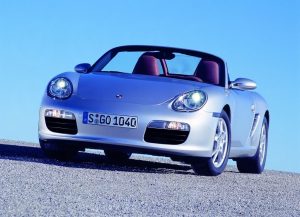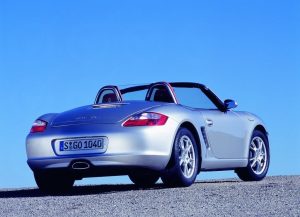Recalls: Porsche 987 Boxster
Overview
Manufacturers, or importers, issue recalls for defects or faults which have the potential to cause injury. Generally, manufacturers will inform the original buyers if their vehicle is subject to a recall and of the steps required to remedy the defect or fault. Please note that the recalls below (if any) are for Australian-delivered vehicles only. Furthermore, the number of recalls should not be taken as an indication of a model’s reliability or its safety more generally.
Recalls: Porsche 987 Boxster
No recall information is available for the Porsche 987 Boxster. To search for recalls of Porsche models, please visit Product Safety Recalls Australia: Porsche.
Problems and faults: Porsche 987 Boxster
Overview
This section identifies potential problems, causes and fixes based on the experiences of owners and repairers, online sources and technical service bulletins. This information is provided solely for reference purposes and AustralianCar.Reviews recommends that only properly qualified persons carry out repairs or modifications. Furthermore, the number of items below should not be taken as an indicator of a model’s reliability or the frequency with which they may occur.
To report a problem or fault to the AustralianCar.Reviews team, please use the Contact Us form. Note that AustralianCar.Reviews does not offer advice on automotive problems or disputes; such enquiries will not receive a reply. For vehicles purchased from dealers after 1 January 2011, please see our Australian Consumer Law fact sheet.
2004-08 Porsche 987 Boxster: M96 and M97 engines – Intermediate shaft bearing (IMS bearing) failure
About the Intermediate Shaft (IMS) bearing
For Porsche’s M96 and M97 engines, the timing chains are driven off opposite ends of the intermediate shaft. The suspect Intermediate Shaft bearing is located at the flywheel end of the motor and handles the majority of the load on the intermediate shaft. Due to the design of the crankcase, however, there are no internal oil passages from which pressurised engine oil can be used to lubricate this bearing.
Intermediate Shaft bearing failure
It is understood that there are two causes of Intermediate Shaft bearing failure:
- Over time, oil and contaminants may seep past the bearing seal, wash out the original lubricant and become trapped inside it – this causes the bearing to overheat, wear prematurely and eventually fracture; and,
- On early M96 engines, the centre bolt that was used to secure the IMS bearing was too weak and could snap, causing the bearing to fail.
If the Intermediate Shaft bearing fails,
- Contaminants and debris from the bearing can circulate throughout the engine. If this occurs, the engine has to be dis-assembled and rebuilt; and,
- The timing chains can disengage such that the pistons and valves collide, causing serious damage that requires the engine to be replaced.
Intermediate Shaft bearing revisions
During production of the M96 and M97 engines, the intermediate shaft was revised twice –
- Original design – M96 engine (from 1997-99 model years): a dual-row ball ball-bearing. While all M96 engines from the 1997 to 1999 model years had this dual-row ball-bearing, it continued to be used in some 2000 and 2001 engines. It has been estimated that the intermediate shaft bearing failure rates for these M96 engines is 4 to 7 per cent.
- First revision – M96 engine (from 2000-01): a single row ball-bearing with a reduced load capacity. By model year 2002, all engines used this smaller, lower capacity bearing. It has been estimated that the intermediate shaft bearing failure rates for these M96 engines is around 10 per cent.
- Second revision – M97 engine (2005-08 model years): a much larger single row bearing was introduced which had the same load capacity of the early dual-row ball bearings. This revision, however, could not be serviced without engine dis-assembly so that the IMS bearing could not be replaced as a preventative measure.
In all designs, however, Porsche continued to use a sealed ball-bearing and did not specify a service interval for their replacement.
Symptoms
The seal around the intermediate shaft cover was susceptible to leaks, but was subsequently revised. If there are oil leaks in this area, then the intermediate shaft may be failing and should be inspected immediately.
The oil filter should be regularly inspected for signs of metallic debris (from the metal balls within the bearings) that are indicative of a deteriorating IMS bearing.
Prevention
To reduce the likelihood of an IMS failure, it is recommended that:
- The engine oil be changed every 6 months or 6000-8000 kilometres. This prevents higher acid levels in the oil which can destroy the bearing seals; and,
- The vehicle be driven regularly and engine speed kept above 2500-3000 rpm. It is understood that higher engine speeds unload the IMS bearing and aid in lubrication.
For model year 1997 to 2005 engines, the IMS bearing is accessible and a replacement bearing can be installed as a preventative measure (see Pelican Parts’ IMS Bearing Replacement article); there are also a range of aftermarket options available from IMS Solution and LN Engineering.
Porsche 987 Boxster: rear main seal (RMS) oil leak
For M96 engines in the Porsche 986/987 Boxster, 996 911 and 997 Series I 911, the rear main seal (i.e. the oil seal that fits around the output end of the crankshaft) can leak oil into the transmission’s bell housing. If not detected early, the oil can damage the flywheel and clutch. Many owners, however, only become aware of this problem when oil starts leaking onto the surface below the vehicle. It has been speculated that the leaks were due to casting variations where the seal was located; while some were circular, others had an oval shape.
It is understood that Porsche have changed the design of the seal a number of times during production from 1996 to 2008. While the original seal was rubber and had a spring ring, later seals had a solid metal insert within the rubber for greater stiffness. The fourth generation seal came with a green plastic installation ring to protect the sealing lip as the seal was pressed into place; the plastic ring would then be removed. However, the revised seal would not fit on the old intermediate shaft cover since the seal was wider than the original; as such, the cover had to be replaced to fit the revised seal.
To replace the seal, the gearbox and clutch have to be removed. To properly fit the seal, the correct Porsche tool should be used to press it in. While some repairers may try to tap it in with a hammer, this poses a risk of damage and not properly aligning the seal; it may also push the seal too far into the engine.
In March 2003, a new tool was introduced to set the seal further into the bore than the original seal for improved sealing against an area that does not have wear and is free from corrosion. Since the rear main seal (RMS) is a lip-type radial seal, it must exert radial pressure on the crankshaft sealing journal. Over time, the seal wears a small groove into the crankshaft journal.
Cylinder bore scoring: Porsche 987 Boxster S (M97 engine)
There have been reports of cylinder bore scoring on pre-2007 3.4-litre M97 engines (as used in the Boxster S). For this engine, it is understood that bore scoring occurs because the pressure between the piston and the cylinder is too great for the oil film to separate the thrust faces sufficiently to prevent damage. Common symptoms of bore scoring include:
- Excessive smoke on start-up;
- A ticking noise from the piston tilting and the top of the piston tapping against the cylinder head as it passed TDC; and,
- Oil consumption.
Oil pump piston
For Porsche Boxster models with the 2.7-litre flat six cylinder engine, a squealing noise when the engine is first started may be due to a problem with the oil pump piston.
Radiators
The radiators are positioned behind the front air intakes and are susceptible to stone chip damage, corrosion and becoming clogged with debris. A common modification is to fit grilles to the intakes to prevent debris from accumulating on the radiators.
Power steering pump
There have been reports of the Boxster’s hydraulic power steering pump overheating from track use; modified pumps have been issued to overcome this.
Suspension
Rattling noises from the front of the vehicle may be due to nuts on the stabiliser bar becoming loose.
Exhaust hanger
The exhaust system hanger may allow the exhaust pipe to move and point downward – if so, the clamp needs to be replaced.
Key fob
The remote central locking key fob may cease to function if repeated attempts are made to unlock the door from too far away (i.e. beyond the transponder’s range). If this occurs, the key must be resynchronized with the vehicle.
Some of the functions operated via buttons on the key fob may activate unintentionally – dealers may disable these functions and/or extend the length of time for which the buttons must be depressed to activate these functions.
Porsche 987 Boxster S and Boxster Spyder: seatbelt function may be restricted
In 2011, Porsche UK issued a ‘non-code action’ for Porsche Boxster S and Boxster R vehicles because ‘seat belt function may be restricted’ (NCA/2011/017); no further details were provided.




